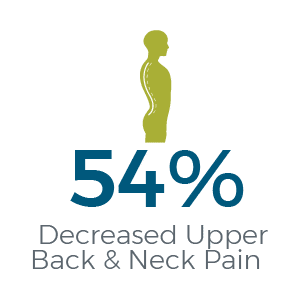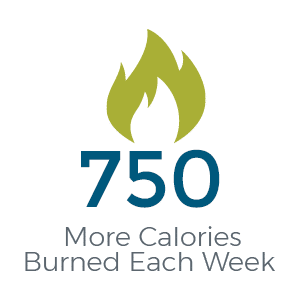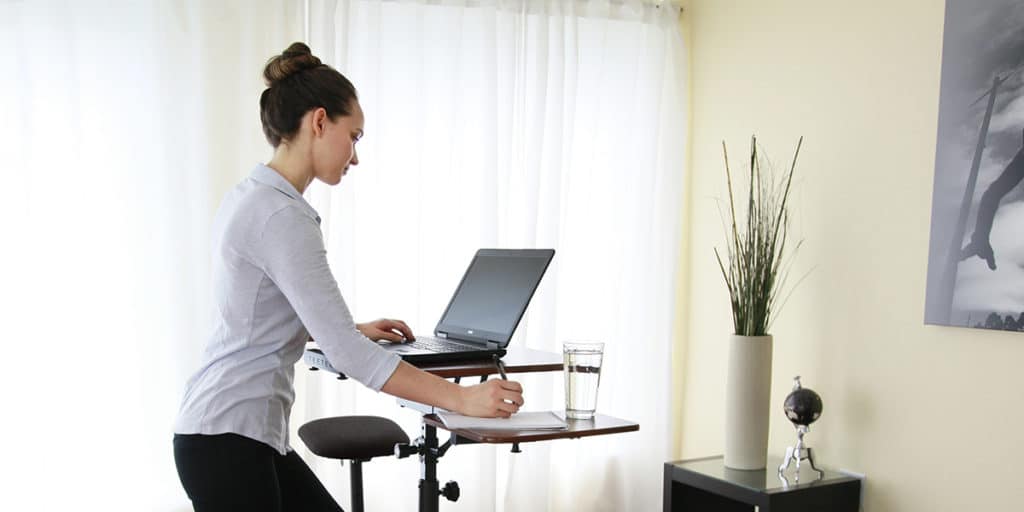Studies support the use of a standing desk for your overall health
Standing desks have been available for many years, although they are becoming more popular as people realize the benefits a standing desk truly provides for the body.
Studies show that people who lead a sedentary lifestyle or sit for long periods at work are more susceptible to heart disease, type 2 diabetes, and a shorter life expectancy. This combination of symptoms is often referred to as “sitting disease“. Even worse, the long-term effects of sitting often are not simply countered by exercise or diet!
Standing while working, even for just 30 minutes at a time (4 hours a day or more) can have a major impact on your health and body, and it’s not difficult to do if you have the right equipment. Sit-Stand desks, sometimes known as standing desks or height-adjustable desks, are all the rage and make it very easy to change posture throughout the day while working. For example, some offer easy adjustability of the desktop height and have a swiveling chair that can move out of the way while standing! Using this type of equipment at work can have innumerable benefits:

1. Reduce Back Pain
Back pain is something that 80% of adults will experience over their lifetimes, and one of the greatest complaints of office workers who are seated all day.
Many studies have explored the impact of using a standing desk on office workers with long-term back pain. The “Take-a-Stand Project”1 in 2011 found that participants who spent an average of 66 minutes of their workday standing experienced a 54% reduction in upper back and neck pain.
In just over an hour a day, the participants of the “Take-a-Stand Project” had dramatic results. Imagine what standing could do for you!
2. Lower your Risk of Heart Disease
Researchers have been studying the benefits of standing for more than 60 years! In 1953 a study of bus conductors found that those who stood all day had half the risk of heart disease-related deaths of the bus drivers who were seated.2
Sixty years later, a comparison of 18 studies with almost 800,000 participants came to the same conclusions as the original bus conductor study. Their findings were that a sedentary lifestyle has been linked to a 90% increase in the risk of cardiovascular mortality and a 147% increase in the risk of cardiovascular events as compared to an active lifestyle.
3. Lower your Risk of Weight Gain and Obesity

By standing instead of sitting, you can reduce the risk of weight gain by burning about 50 extra calories an hour. If you were to stand for 3 hours each workday it would equal out to 750 calories a week. Over the course of a full year that would equal about 30,000 extra calories burnt off, or about 8 lbs. of fat. In terms of activity levels, those 30,000 calories would be the equivalent of running 10 marathons a year! 4
4. Lower Blood Sugar Levels and Risk of Type 2 Diabetes
While an increase in blood sugar levels is expected after a meal, individuals with large spikes in blood sugar have a much higher risk of becoming diabetic. Blood sugar increases have also been linked to a general sense of poor health.
In 2013, a small study of 10 office workers showed that standing for 185 minutes after lunch reduced the workers’ blood sugar levels by 43% compared to sitting for the same period. The participants also wore pedometers which were analyzed and found that there were no significant changes in physical movements between the two groups. This indicates that the decrease in blood sugar levels was a function of standing vs. sitting.5
Another study of 23 overweight office workers found that alternating every 30 minutes between standing and sitting reduced blood sugar spikes by an average of 11.1%. Diet and physical activity were monitored during the experimental period.6
As shown by the above studies you can reduce blood sugar spikes and your risk of diabetes just by using a standing desk, no extra effort is required!
5. Improve Mood and Gain Energy
Sitting and increased sedentary time have been linked to an increased risk of both depression and anxiety. It stands to reason then, that standing would improve mood and increase happiness.
During the “Take-a-Stand Project” in 2011, a group of 24 office workers were provided with a standing desk. Participants self-reported improved mood states over the 4 week period where they reduced time spent sitting by an average of 66 minutes.1
At the end of the 4-week intervention period, participants were asked a series of questions regarding the specific benefits of alternating between sitting and standing positions. Their responses were as follows:
“87% felt more comfortable, 87% felt energized, 75% felt healthier, 71% felt more focused, 66% felt more productive, 62% felt happier, and 33% felt less stressed as a result of having the sit-stand device installed at their workstations.”1
Interestingly enough, when the sit-stand desks were removed, the participants reported a deterioration in mood. This suggests that using a standing desk needs to be a part of a complete lifestyle adjustment in order to obtain the full benefits.
6. Boost Your Productivity
One common concern among those interested in a standing desk is the ability to complete daily tasks such as typing or answering phone calls. Working while standing may take some getting used to, however, there has been no negative impact on daily activities reported by those using standing desks.
The boost in mood and energy, as well as the reduction in back, shoulder, and neck pain, is likely to improve productivity and mental alertness. When the body as a whole is in better shape, it functions more efficiently and it can be reasonably expected that this would in turn boost productivity.
Conclusion:
The above benefits may not be the only ones you find as you try out this new lifestyle. Improvements in physical, metabolic, and mental health can impact your life in ways you never thought possible.
If you are considering changing to a standing desk, we recommend the Teeter Sit-Stand Desk. It is recommended that you ease into standing while working in short increments. The adjustability of the desktop, as well as the included seat, makes the Teeter Sit-Stand Desk a perfect transition into standing. This will give your body time to adjust to the new position and allow you to start reaping the benefits of standing right away.
Get Real Back Pain Relief
Join over 3 million people who have found real back pain relief with Teeter.
